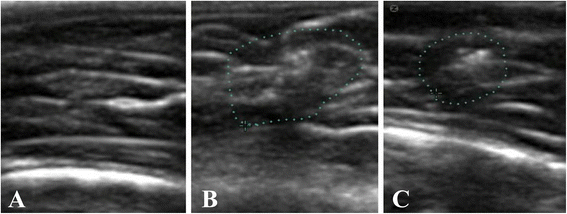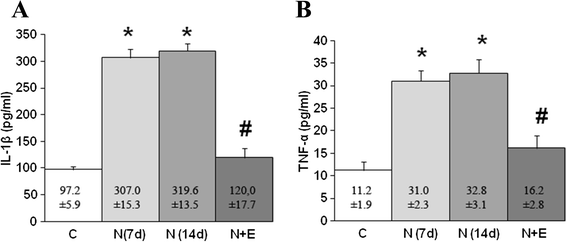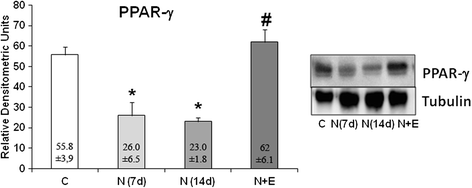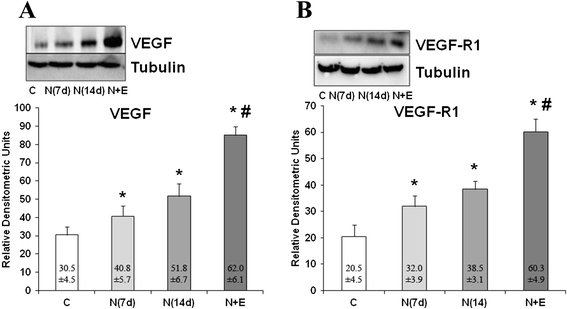An experimental study of muscular injury repair in a mouse model of notexin-induced lesion with EPI® technique
- PMID: 25897404
- PMCID: PMC4403980
- DOI: 10.1186/s13102-015-0002-0
An experimental study of muscular injury repair in a mouse model of notexin-induced lesion with EPI® technique
Abstract
Background: The mechanisms of muscle injury repair after EPI® technique, a treatment based on electrical stimulation, have not been described. This study determines whether EPI® therapy could improve muscle damage.
Methods: Twenty-four rats were divided into a control group, Notexin group (7 and 14 days) and a Notexin + EPI group. To induce muscle injury, Notexin was injected in the quadriceps of the left extremity of rats. Pro-inflammatory interleukin 1-beta (IL-1beta) and tumoral necrosis factor-alpha (TNF-alpha) were determined by ELISA. The expression of receptor peroxisome gamma proliferator activator (PPAR-gamma), vascular endothelial growth factor (VEGF) and vascular endothelial growth factor receptor-1 (VEGF-R1) were determined by western-blot.
Results: The plasma levels of TNF-alpha and IL-1beta in Notexin-injured rats showed a significant increase compared with the control group. EPI® produced a return of TNF-alpha and IL-1beta values to control levels. PPAR-gamma expression diminished injured quadriceps muscle in rats. EPI® increased PPAR-gamma, VEGF and VEGF-R1 expressions. EPI® decreased plasma levels of pro-inflammatory TNF-alpha and IL-1beta and increased anti-inflammatory PPAR-gamma and proangiogenic factors as well as VEGF and VEGF-R1 expressions.
Conclusion: The EPI® technique may affect inflammatory mediators in damaged muscle tissue and influences the new vascularization of the injured area. These results suggest that EPI® might represent a useful new therapy for the treatment of muscle injuries. Although our study in rats may represent a valid approach to evaluate EPI® treatment, studies designed to determine how the EPI® treatment may affect recovery of injury in humans are needed.
Keywords: EPI; Injury; Muscle; Notexin-induced; Technique.
Figures





References
-
- Li Y, Foster W, Deasy BM, Chan Y, Prisk V, Tang Y, et al. Transforming growth factor-beta1 induces the differentiation of myogenic cells into fibrotic cells in injured skeletal muscle: a key event in muscle fibrogenesis. Am J Pathol. 2004;164(3):1007–19. doi: 10.1016/S0002-9440(10)63188-4. - DOI - PMC - PubMed
LinkOut - more resources
Full Text Sources
Other Literature Sources
Medical

